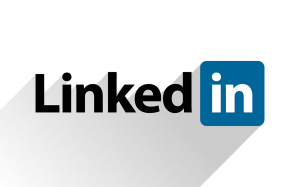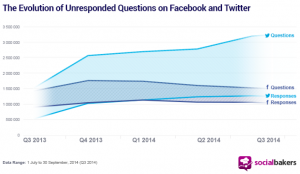Social media is changing the way we do business. The rising use of social networks means it’s easier than ever to share information, shape opinion and provide insights between people – including the people who work for you.
Already, our constantly connected world is disrupting the way employers interact with employees. While many companies are still wondering whether they should ban social media, the smart ones are leveraging social platforms to encourage openness and transparency in their workplace.
Every employee — regardless of age — needs information to do their job well and make informed decisions. Zig Ziglar is often attributed to the quote, “Research indicates that workers have three prime needs: interesting work; recognition for doing a good job; and being let in on things that are going on in the company.” This holds true today, more than ever, but the way we let people know what’s going on in the company is changing.

In its Human Capital Trends Report 2014, Deloitte underlines the shift of power from centralised teams (management-driven, top-down and controlled messaging) to co-creation (360 degree feedback and crowd-sourced reviews). The question is – are you prepared to accept this shift, and the tools to help you do so? Keep in mind that Generation Y and Milliennials, in particular, have grown up with information accessible at their fingertips. If leaders want to get them onside and build trust, then fostering transparency is the way to go.
Transparency doesn’t mean you — or your people — have to be perfect
Having information readily available doesn’t mean leaders need to get it right all the time. According to Cone Communications, 85 percent of people surveyed said it’s ok if a company isn’t perfect, as long as it’s honest about it’s efforts.
Rather than deciphering marketing spin or pulling accurate information from a sales person, most customers prefer knowing upfront what a company they seek to buy from will or will not provide. If a feature or item I want is being developed and it’s in the pipeline, I am more willing to buy from a company that’s managed my expectations regularly (even if that means telling me each month if or when something is delayed) than to be given a vague indication once or twice a year whether something is on track for delivery.
The same goes for your people.
Leaders need to manage the expectations of their employees in order to keep them engaged and to build trust. Just as your board or management team are appeased when they get visibility of progress or impact of their service or delivery teams, leaders earn trust when they provide frequent information to their people.
Often, though, business communication flows aren’t designed for frequent two-way communication. I’ve worked with executives who are hesitant to send information out or hold meetings because they don’t want to have to revoke or correct it later, or because they feel that such meetings are a waste of time and distracting their people from being productive.
The result of this type of thinking is that often, their people end up feeling left in the dark and become less productive and certainly less engaged in the long-run. That doesn’t mean you have to hold meetings with your entire business every day (though I would encourage weekly team meetings wherever possible). But you should be rethinking the communication channels you do use, and whether emails and intranets are the most efficient way to be time-critical, sensitive or even general information.

Take a leaf out of social media’s book
Some leaders are worried by the transparency that social networks demand, fearing their employees may take advantage of the opportunity to air their grievances publicly. Which prompts the question – is there an existing communication channel where employees are encourages to raise their concerns and their peers or leaders can respond accordingly? Do you people feel they can speak openly and honestly in meetings or with their boss without fear of retribution? If the answer is no, then there are deeper cultural issues within that company that need to be solved.
Tegardless of what generation your employees are from, feeling “in the know” is extremely empowering. In practice, the transparency social channels provide in the workplace also demands accountability and responsibility; when messages are linked to an employee’s account or email addresses, people need to be respectful in how they comment or interact in a public forum.
The stories your team share are the fabric of your company culture
Culture is a combination of the things you value and the behaviours that are driven from those values. So many leaders are looking for ways to improve their company culture, but spend little time thinking about how and how often they communicate, recognise and reinforce company values and the behaviours that demonstrate those values.
Does your business create opportunities to share the stories that capture your values and when people live them out? Are you transparent about who deserves and receives recognition for demonstrating those values? Do you openly share the quality of work people are doing to help your business succeed?
Is there a public or online place where people can see what is going on, recognise and celebrate success publicly and keep a record of what it is that makes your business tick? In my office, we use our own software to display moments our employees are recognised on a digital news feed; it forms our cultural storyboard. It contains real examples of achievement and authentic moments of gratitude — all of which, when linked to your company’s purpose and values, shape your culture. It also makes for a more open, communicative workplace.

When employees can clearly see what people are being recognised for, this amplifies what excellence and success looks like for your business. And when employees have a record of the impact they’ve been recognised for, by people who have witnessed and been affected by their efforts, they and their manager can approach a performance review armed with useful information. Crucially, creating culture and building trust is a two-way process: employees don’t just receive feedback, they give it too.
Here are a few things you can start today to fostering a culture of openness, trust and excellent communication:
Review your communication channels
How much of your team communication relies on top-down or one-way messaging? How are you running your meetings? If there is little opportunity for employees to provide input, then things will go awry quickly. Create opportunities to encourage input and participation in shaping your company’s messaging — both internally across teams, and externally, with customers.
Get social!
Make a conscious effort not to rely on email (which is a huge time waster for anyone!). Check out tools like Slack, Yammer, or Redii and start creating opportunities for your employees to tell stories in a public forum. Embracing transparency is one underestimated way of increasing efficiency and effectieness.
Make frequent catch-ups the norm
If you haven’t booked in a regular (re: fortnightly) catch up with the people in your team, you’re doing both sides a major disservice. Having regular conversations is the best way to keep an eye on the pulse of your organisation. Businesses are moving away from relying on the annual performance reviews because they know infrequent feedback about an employee’s contribution and impact is not going to keep them engaged. Where possible, touch base with your team for a 5 minute huddle every day; this allow people to report their wins, raise questions (that can be taken into a different discussion so as to keep the huddle time short), and to ensure everyone is on track.
Did you enjoy this post? You can read more about what it takes unite, engage and empower your people in Redii’s latest e-book: Building Your Dream Team.
Business & Finance Articles on Business 2 Community
(60)
Report Post








